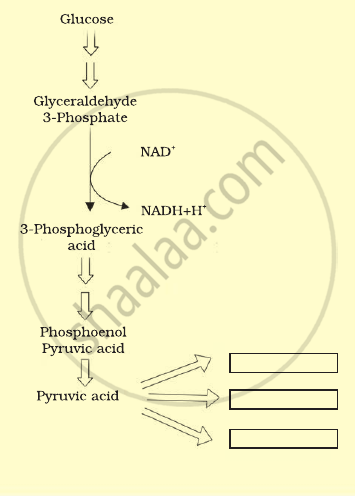Advertisements
Advertisements
प्रश्न
Energy is released during the oxidation of compounds in respiration. How is this energy stored and released as and when it is needed?
उत्तर
The energy which gets released during the oxidation of compounds in respiration is stored as Adenosine Triphosphate i.e., ATP. The ATP is stored in the form of chemical bonds.
ADP + IP + energy → ATP ......(ADP = Adenosine Diphosphate and IP = Inorganic phosphorous)
When energy is required then, this bond energy is broken and utilised
ATP → ADP + IP + energy.
APPEARS IN
संबंधित प्रश्न
Pyruvate undergoes oxidative decarboxylation to produce _____________.
(a) 2-PGA
(b) α-Ketoglutarate
(c) Succinyl-Co-A
(d) Acetyl-Co-A
During glycolysis of one molecule of glucose, how many ADP molecules are phosphorylated?
Which process does the following equation represent?
\[\ce{C6H12O6 + 2NAD + 2ADP + 2Pi → CH3 - CO - COOH + 2 NADH2 + 2 ATP}\]
F1 particles participate in the synthesis of ______.
Pyruvic acid is the end product of glycolysis. What are the three metabolic products of pyruvic acid produced under aerobic and anaerobic conditions? Write their name in the space provided in the diagram.

We commonly call ATP as the energy currency of the cell. Can you think of some other energy carriers present in a cell? Name any two.
ATP produced during glycolysis is a result of substrate level phosphorylation. Explain.
Give an account of Glycolysis. Where does it occur? What is the end product? Trace the fate of these products in both aerobic and anaerobic respiration.
Formation of acetyl CoA from pyruvic acid takes place by ______.
In glycolysis, electrons are removed by ______.
